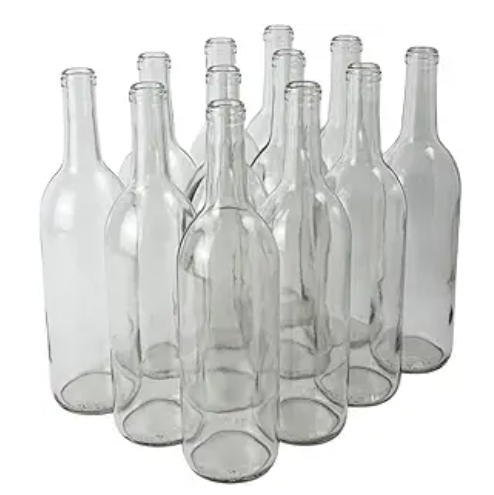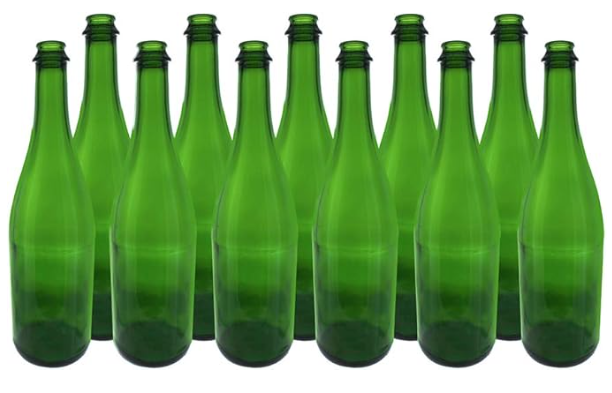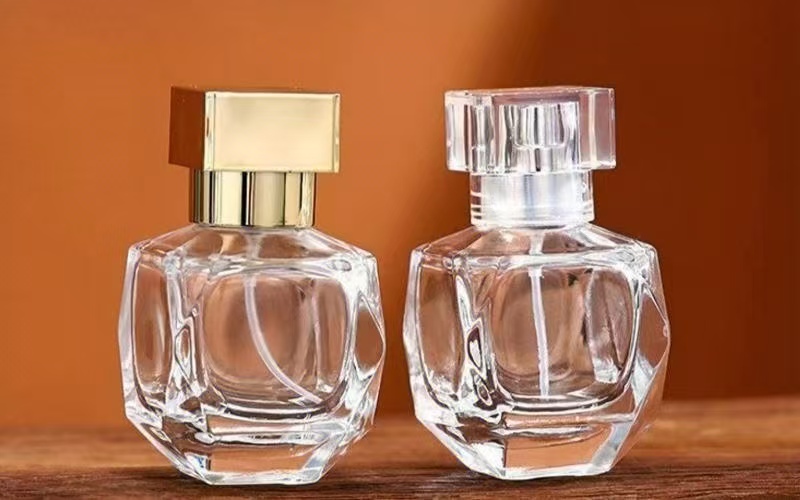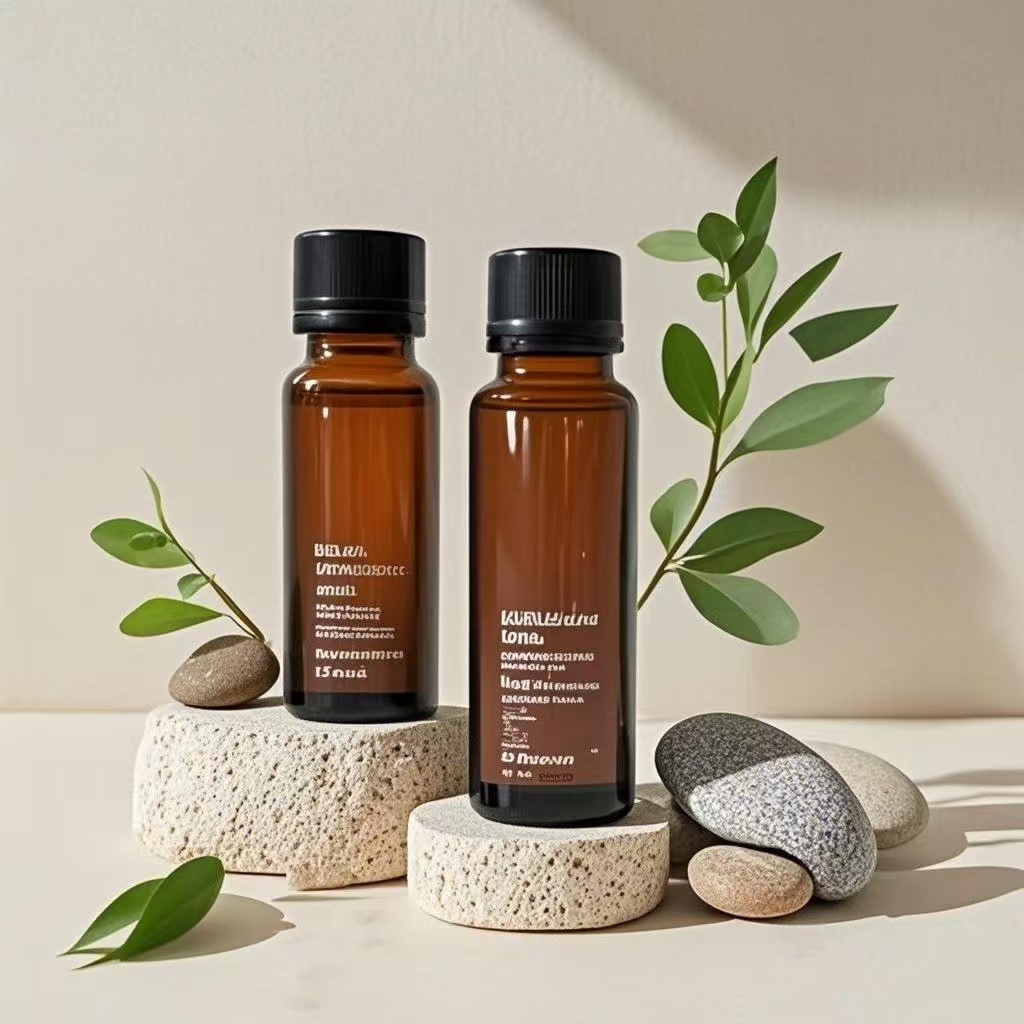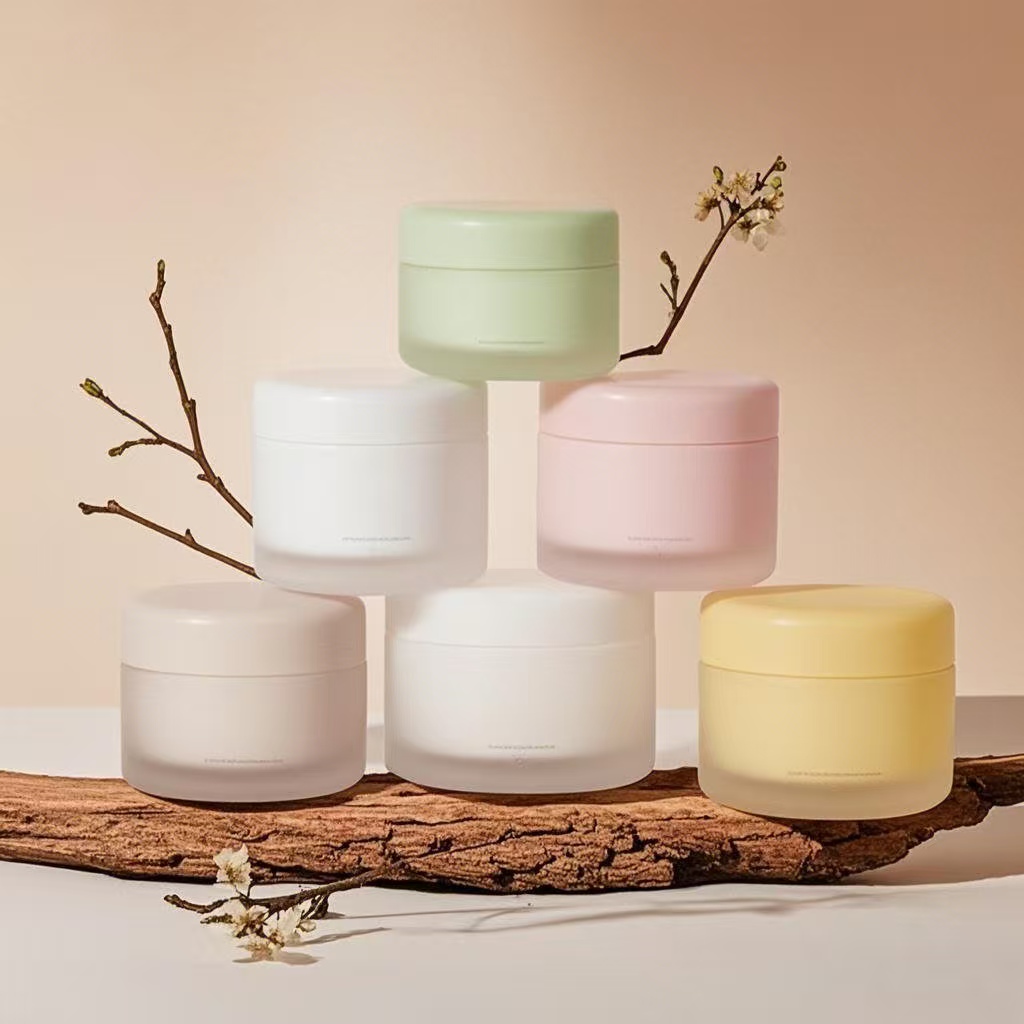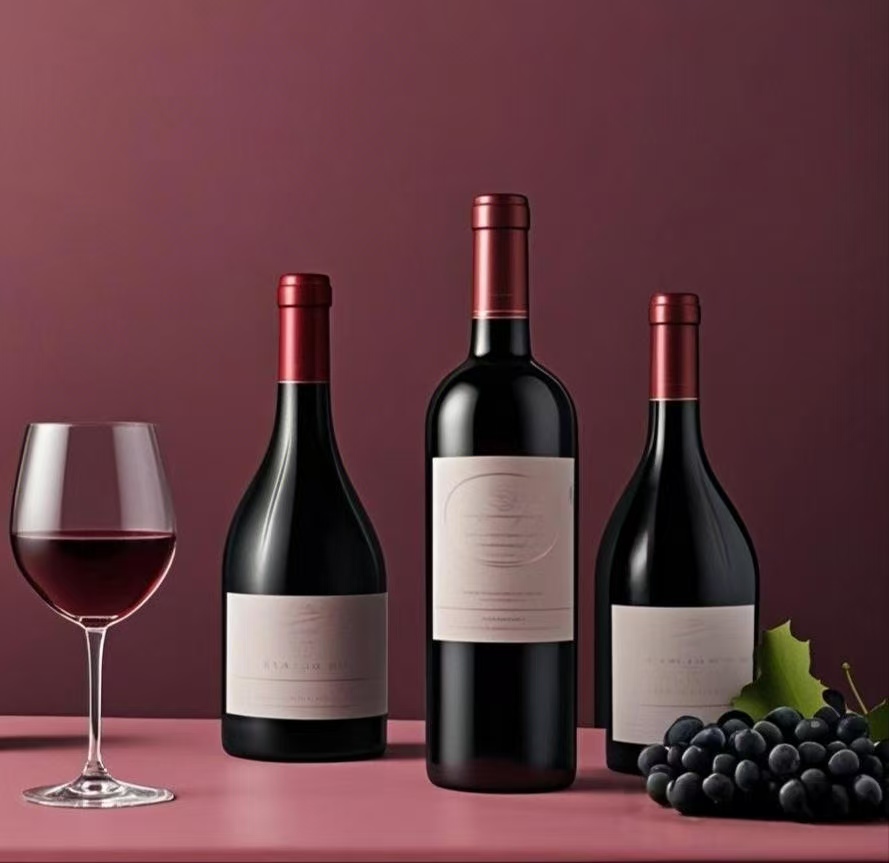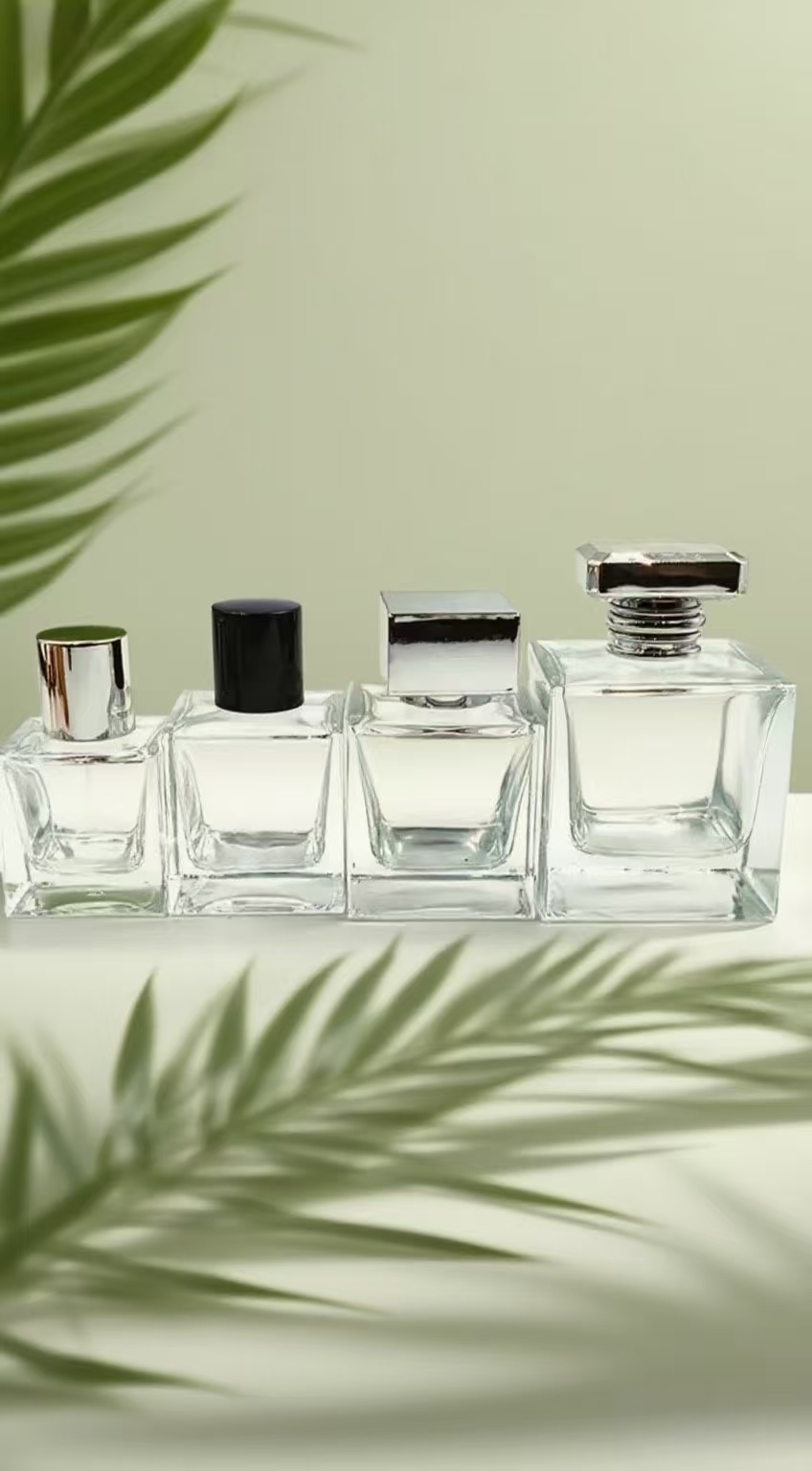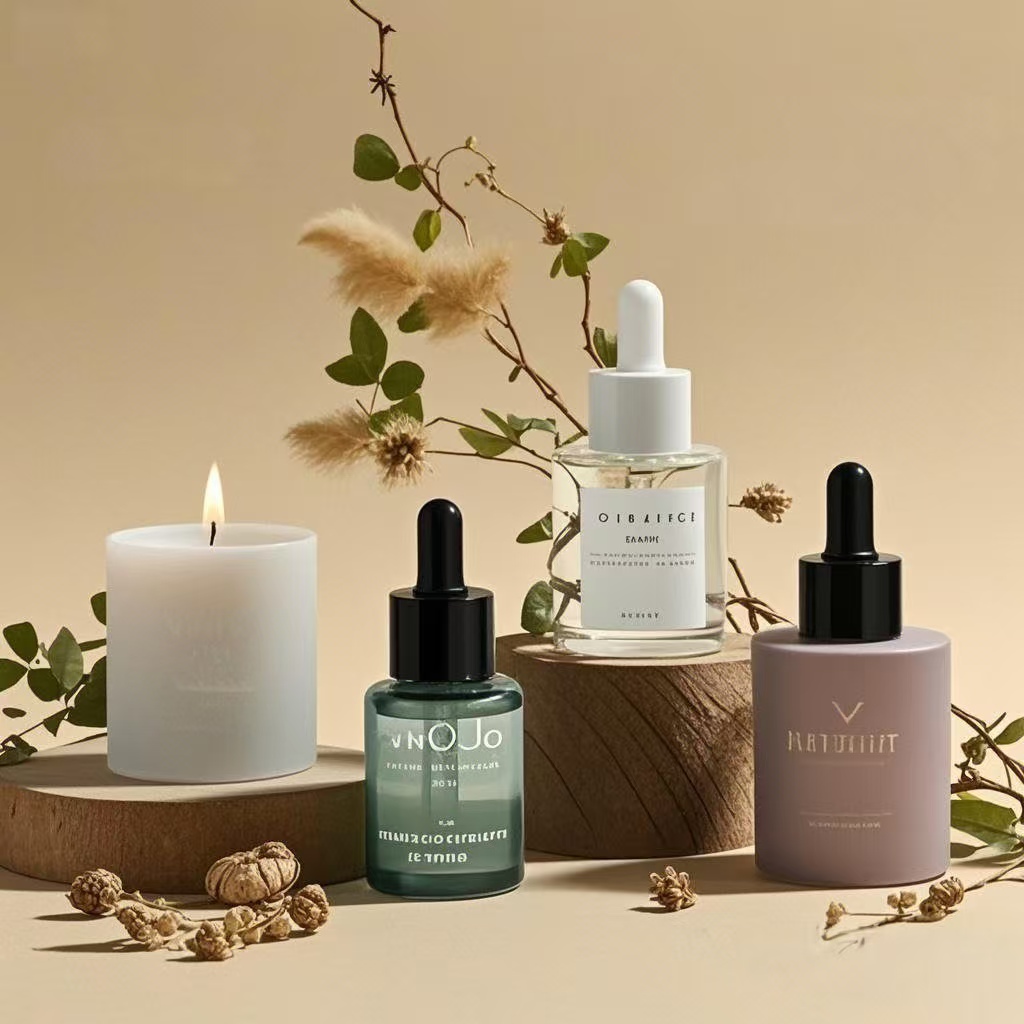Champagne bottles are much more than mere containers; they are an integral part of the champagne experience, embodying centuries of tradition, innovation, and craftsmanship. Their design and manufacturing are meticulously engineered to preserve the delicate qualities of sparkling wine, ensuring safety under high pressure while conveying elegance and luxury. At Paupacking, we offer premiumChampagne Bottlesthat meet the highest standards of quality, combining durability, aesthetic appeal, and functionality. This comprehensive article expands on every aspect of champagne bottles, providing an in-depth understanding of their unique characteristics, production processes, applications, and why Paupacking’s bottles are the preferred choice for producers and connoisseurs worldwide.
The Unique Characteristics of Champagne Bottles
Champagne bottles are distinct from other wine or liquor bottles due to the specific demands placed on them by the sparkling wine inside. The internal pressure generated by carbonation can reach up to six atmospheres—approximately three times the pressure in a car tire—requiring bottles that are robust, safe, and reliable.
Thick Glass Walls: Engineering Strength to Withstand Pressure
One of the most defining features of champagne bottles is their thick glass walls. This thickness, typically ranging from 3 to 4 millimeters, is significantly greater than that of standard wine bottles, which usually have walls about 2 millimeters thick. This increased thickness is essential to withstand the intense pressure exerted by the dissolved carbon dioxide within the bottle, which can cause thinner glass to shatter or explode.
The manufacturing of such thick glass requires specialized molds and precise temperature control to ensure uniformity and avoid weak points that could compromise the bottle’s integrity. Uneven thickness or microscopic flaws can become stress points under pressure, leading to catastrophic failure. Paupacking’sChampagne Bottlesare produced with meticulous attention to glass thickness and strength, using advanced forming technologies and quality control measures to ensure maximum safety without sacrificing elegance.
Moreover, the thickness of the glass also contributes to the tactile experience of the bottle. The substantial weight and solidity convey a sense of quality and luxury, enhancing the consumer’s perception of the champagne inside. This sensory aspect is critical in premium markets where packaging plays a significant role in brand positioning.


Deep Punt: Functionality Meets Tradition
The deep punt, or the concave indentation at the bottom of the bottle, serves multiple important purposes. Structurally, it adds strength by distributing pressure evenly across the bottle’s base, reducing the risk of breakage. The punt also facilitates sediment collection during the riddling process—a traditional step in champagne production where bottles are gradually tilted and rotated to consolidate yeast sediment near the neck for removal.
From a handling perspective, the punt allows sommeliers and servers to grip the bottle securely during pouring, providing leverage and balance. This is especially important given the bottle’s weight and the need for precise pouring to preserve carbonation and prevent spillage.
Historically, the punt’s depth and shape have evolved alongside production techniques and aesthetic preferences. Paupacking’s champagne bottles feature precisely engineered punts that balance structural integrity with ergonomic design, ensuring both safety and ease of use.
Wide Body and Sloping Shoulders: Optimizing Pressure Distribution and Elegance
The wide body of champagne bottles accommodates the volume of sparkling wine and provides stability during storage and handling. The sloping shoulders are designed to evenly distribute internal pressure, preventing stress concentrations that could lead to cracks or breakage. This shape also enhances the bottle’s aesthetic appeal, giving it a distinctive silhouette recognized worldwide as synonymous with celebration and sophistication.
The bottle’s shape is carefully calibrated to meet both functional and marketing needs. A well-proportioned bottle not only withstands pressure but also fits efficiently into packaging, transport crates, and display racks. Paupacking’s design team optimizes bottle shapes to combine tradition with modern elegance, ensuring each bottle is both functional and visually striking.
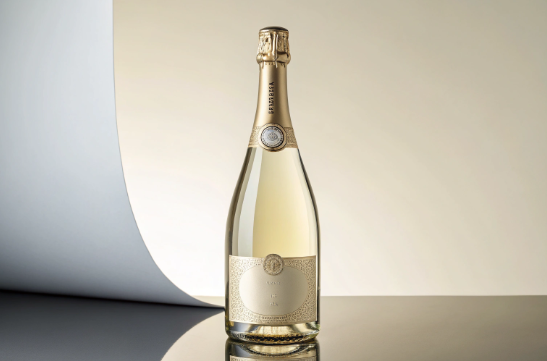

Specialized Neck and Closure: Securing the Sparkle
The neck of a champagne bottle is engineered to securely hold the cork and the wire cage, known as the muselet, which prevents the cork from popping prematurely due to pressure. The neck must be strong and precisely shaped to accommodate these closures while maintaining an airtight seal to preserve carbonation.
The cork itself is typically made from natural cork or agglomerated cork, designed to compress and expand to fit tightly within the neck. The muselet is twisted around the neck to hold the cork firmly in place, resisting the internal pressure until the moment of opening.
Paupacking’sChampagne Bottlesare crafted with necks engineered for compatibility with standard champagne corks and muselets, ensuring safety, ease of use, and a premium unboxing experience.
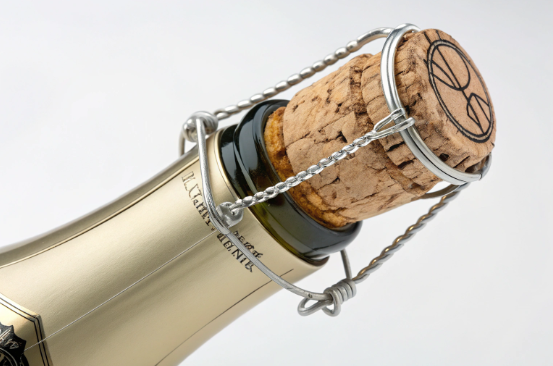
The Manufacturing Process of Champagne Bottles
Producing champagne bottles involves a complex, multi-stage process that balances artistry with industrial precision and strict safety requirements.
Raw Material Selection and Preparation: The Foundation of Quality
The quality of a champagne bottle begins with its raw materials. High-purity silica sand, soda ash, and limestone are combined to form the glass batch. The purity and composition of these materials affect the glass’s clarity, strength, and chemical resistance.
Paupacking sources premium raw materials and employs stringent quality controls to ensure the glass used in our champagne bottles is free from impurities that could weaken the structure or affect appearance. The raw materials undergo rigorous testing to meet international standards, ensuring consistency and reliability.
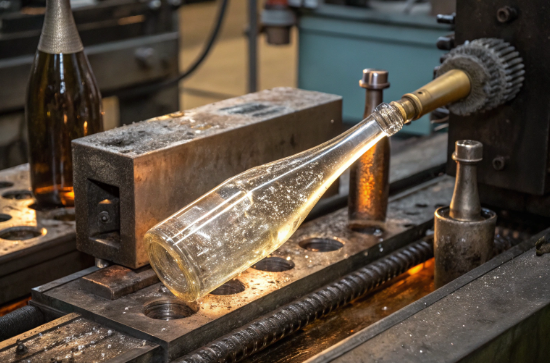
Melting and Coloration: Crafting the Glass
The raw materials are melted in furnaces at temperatures ranging from 1400°C to 1600°C. For champagne bottles, clear glass is the most common choice, allowing the wine’s color and effervescence to be showcased. However, green glass is also used for its UV-protective properties, which help preserve the wine’s quality over time.
Paupacking’s furnaces utilize advanced temperature regulation and atmosphere control to produce glass with exceptional clarity and strength. Our ability to produce both clear and tinted glass bottles allows clients to select packaging that aligns with their brand and product protection needs.
The melting process is carefully monitored to ensure homogeneity and prevent defects such as bubbles or streaks, which could compromise both aesthetics and structural integrity.
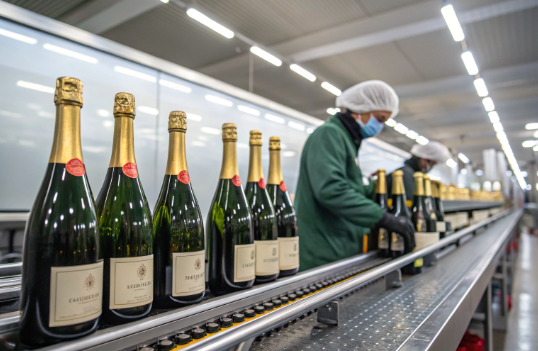
Forming the Bottle: Precision and Consistency
The molten glass is shaped using blow-and-blow or press-and-blow forming methods. These techniques involve blowing air into a molten glass gob inside a mold to create the bottle’s shape. For champagne bottles, molds are designed to produce thick walls and the characteristic punt.
Precision in forming is crucial to ensure uniform wall thickness and avoid weak points. Paupacking’s state-of-the-art forming equipment and molds guarantee consistent production quality, enabling bottles to withstand the high pressures of sparkling wine.
The forming process also includes trimming and finishing steps to smooth the bottle’s lip and ensure proper fit with closures.
Annealing: Enhancing Durability
After forming, bottles are gradually cooled in annealing ovens to relieve internal stresses caused by rapid temperature changes. Proper annealing prevents cracking and enhances durability.
Paupacking’s annealing process is carefully calibrated based on bottle size, thickness, and glass composition, ensuring each champagne bottle achieves optimal strength and longevity.
Quality Control: Ensuring Excellence
Each bottle undergoes rigorous inspection to detect defects such as bubbles, cracks, or uneven thickness. Automated vision systems and manual inspections ensure only bottles meeting Paupacking’s high standards reach customers.
Quality control extends beyond visual inspection to include pressure testing and dimensional verification, guaranteeing safety and compatibility with closures.
Surface Treatment and Decoration: Branding and Protection
Optional surface treatments, such as coatings for scratch resistance or decorative finishes, are applied to enhance durability and brand appeal. Paupacking offers customization options including embossing, labeling, and color treatments to help brands differentiate their products.
These treatments not only improve aesthetics but also protect the bottle during handling and transport.
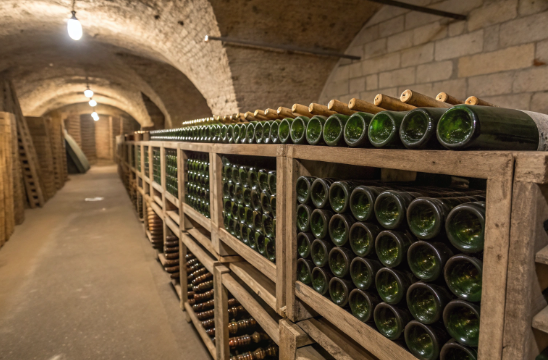
The Role of Champagne Bottles in Champagne Production
Champagne production, especially the traditional Méthode Champenoise, relies heavily on the bottle’s design and quality.
Second Fermentation in Bottle: Creating the Sparkle
Champagne undergoes a secondary fermentation inside the sealed bottle, producing carbon dioxide that creates the signature bubbles. The bottle must contain this pressure safely without compromising clarity or aesthetics.
Paupacking’s champagne bottles are engineered to meet these stringent requirements, ensuring the wine’s effervescence is preserved until consumption.
Pressure Containment: Keeping the Bubbles Alive
The thick glass walls and secure closures prevent CO2 from escaping, maintaining carbonation and freshness. The bottle’s shape and punt further contribute to pressure distribution.
Aging on Lees: Developing Complexity
Champagne bottles are stored horizontally for extended periods, allowing yeast sediment to develop flavor complexity. The bottle’s design facilitates this process while maintaining structural integrity.
Riddling and Disgorging: Refining the Wine
The punt and shape aid in sediment collection and removal without damaging the bottle or wine. Paupacking’s bottles support these traditional techniques seamlessly.
Applications and Market Uses of Champagne Bottles
While primarily used for champagne, these bottles are also popular for:
-
Sparkling wines like Prosecco, Cava, and Franciacorta
-
Luxury spirits adopting champagne-style packaging for premium appeal
-
Special edition gift sets and celebratory packaging
Paupacking’s versatileChampagne Bottlescater to these diverse applications, offering tailored solutions for producers and brands.
Advantages of Paupacking’s Champagne Bottles
-
Premium glass quality with exceptional clarity and strength
-
Thick walls and reinforced punts for safety
-
Elegant, customizable designs to enhance brand image
-
Sustainable manufacturing practices and recyclable materials
-
Compatibility with standard closures and packaging systems
Comparison Table: Champagne Bottles vs. Other Glass Bottles
| Feature | Champagne Bottles | Standard Wine Bottles | Liquor Bottles (700ml Fusion Series) |
|---|---|---|---|
| Glass Thickness | Thick, to withstand high pressure | Thinner, for still wines | Medium thickness, durable |
| Base Design | Deep punt for strength and sediment | Shallower punt or flat base | Flat or shallow punt |
| Shape | Wide body, sloping shoulders | Slimmer, straight shoulders | Varied, often square or cylindrical |
| Closure Compatibility | Cork and wire cage (muselet) | Cork or screw cap | Screw caps or cork |
| Pressure Resistance | High (up to 6 atmospheres) | Low | Moderate |
| Typical Volume | 750ml standard | 750ml standard | 700ml standard (Fusion Series) |
| Transparency | Clear or green glass | Clear or green glass | Clear glass (high clarity) |
| Application | Sparkling wines and champagnes | Still wines | Whiskey, liquors, spirits |
| Aesthetic Appeal | Elegant, celebratory | Classic, understated | Premium, modern |
| Recyclability | Fully recyclable | Fully recyclable | Fully recyclable |
The Paupacking 700ml Glass Liquor Bottles Fusion Series
Paupacking’s 700ml glass liquor bottles in the Fusion Series share many qualities with champagne bottles, including high-grade glass, durability, and excellent transparency. These bottles are ideal for brands seeking premium presentation and product preservation. The Fusion Series offers a modern alternative that complements traditional champagne bottle aesthetics.
Care and Handling of Champagne Bottles
Proper care ensures safety and longevity:
-
Store in cool, dark places to preserve wine quality
-
Handle carefully to avoid impacts and breakage
-
Clean gently to maintain clarity and finish
-
Secure during transport to prevent damage
Paupacking’s robust bottles are designed to meet these practical challenges.
Conclusion
Champagne bottles are essential to preserving the sparkle, flavor, and elegance of sparkling wines. Paupacking’sChampagne Bottlescombine strength, beauty, and functionality, making them the ideal packaging solution for producers and brands seeking to elevate their products.
Explore Paupacking’s premiumChampagne Bottlestoday to discover how superior packaging can captivate consumers and enhance your brand’s prestige.




